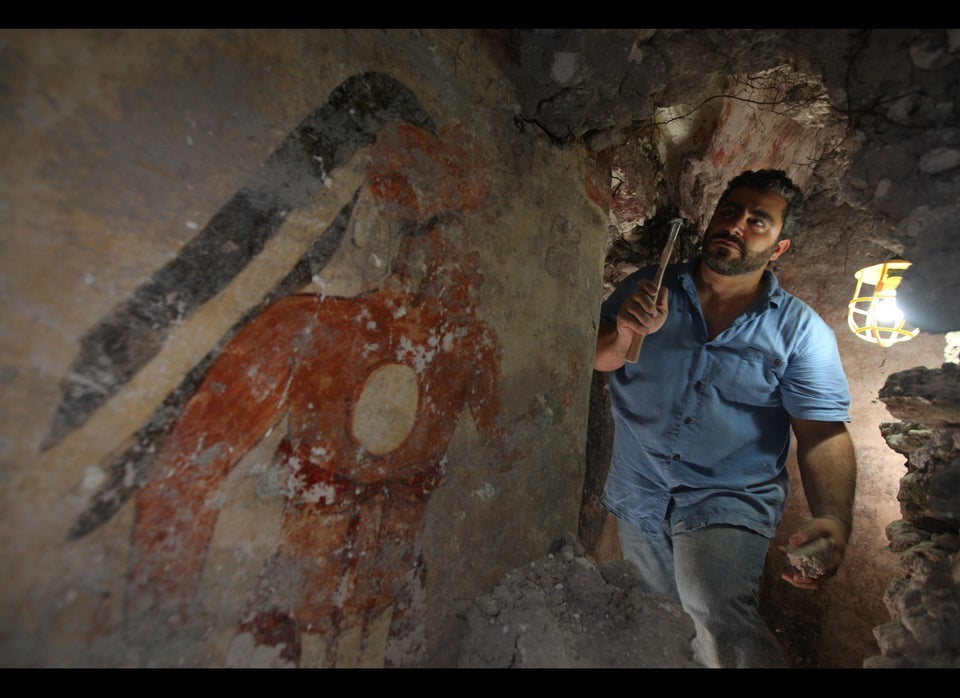Scientists know all about the sophisticated calendars and writing system of the Maya, as well as their ritual sacrifices. But as for exactly what caused the the ancient civilization to collapse around 900 A.D., that's long been a bit of a mystery.
Now a team of researchers from Rice University and Louisiana State University think they may be one step closer to cracking the mystery, thanks in part to evidence from the "Great Blue Hole." The massive sinkhole located in the Caribbean Sea off the coast of Belize was made popular by pioneering conservationist Jacques Cousteau, who visited it in 1971 and declared it one of the world's best scuba diving sites.
The researchers analyzed sediment samples from the Blue Hole, looking specifically at variations in color, grain size, and layer thickness. They also examined samples from the Belize Central Shelf Lagoon, a body of water attached to the mainland, noting differences in the samples' ratio of titanium to aluminum, which helps provide an estimate for rainfall levels.
The analyses revealed low levels of precipitation and a drop in the frequency of tropical cyclones from 800 to 900 A.D. in the Yucatan peninsula--which suggests the region was hit by a major drought at the time, the researchers told The Huffington Post in an email.
The research also suggested that another major drought hit the region between 1000 and 1100 A.D., around when the Maya city of Chichen Itza is believed to have fallen.
"When you have major droughts, you start to get famines and unrest," study co-author Dr. André Droxler, an earth scientist at Rice, told Live Science.
The research on the lagoon was presented on Dec. 16 at the American Geophysical Union's 2014 Fall Meeting in San Francisco, and the study on the Blue Hole samples was published Jan. 2014 in the journal Scientific Reports.
The research builds upon previous studies suggesting climate change precipitated the Mayas' downfall. A 2012 study of a stalagmite from a cave in Belize linked the region's population collapse to a "drying trend" between 600 and 1000 A.D.
The first Maya settlements were established in 1800 B.C. The civilization hit its peak around 250 A.D., reaching a population of about 2,000,000.
